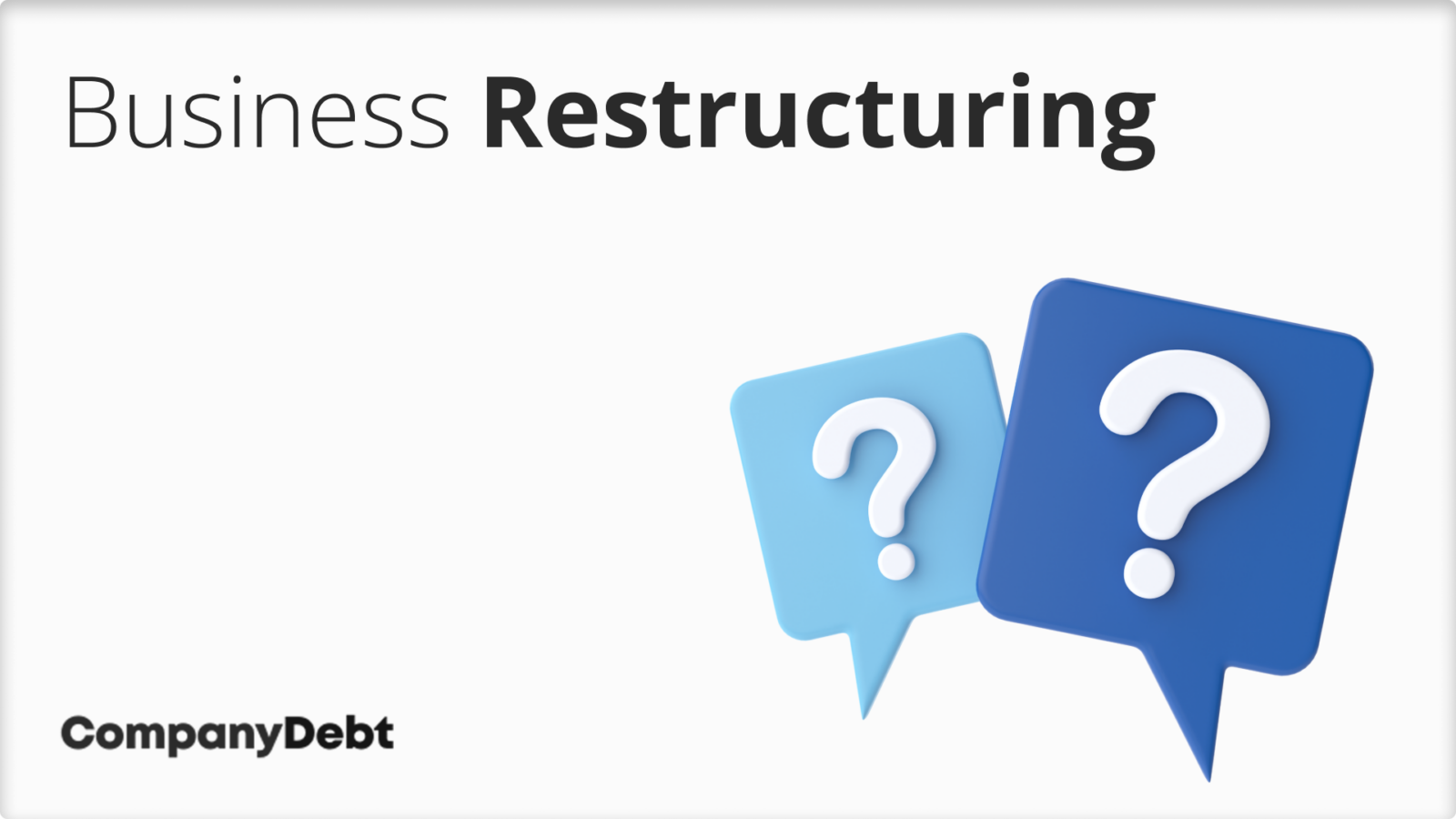
Business Restructuring
Business restructuring is the holistic reorganisation of a company’s operations, management, or legal structure to enhance its efficiency, competitiveness, and financial performance. This practice is often necessary to adapt to market shifts, technological advancements, or internal challenges.
This article will elucidate the critical aspects of business restructuring, offering tailored insights and guidance for UK businesses.

What is Business Restructuring?
Business restructuring is the deliberate reconfiguration of the various elements that make up a company, with the goal of improving its overall performance and sustainability. This can involve changes to the organisational structure, modifications in business processes, or a complete shift in the company’s strategic direction. Essentially, it is a reset button that enables a business to recalibrate its operational and financial aspects to meet current and future challenges more effectively.
The restructuring process may focus on different aspects of a business. Financial restructuring often involves debt consolidation, recapitalisation, or renegotiation of financial agreements. Operational restructuring may include the centralisation or decentralisation of business units, optimising supply chains, or adopting new technologies. Strategic restructuring, meanwhile, involves rethinking the overall business model, perhaps entering new markets or pivoting towards a different set of products or services.
It is essential to note that business restructuring is not merely a reactive measure taken when a company is in distress. Proactive restructuring can be a strategic choice to optimise performance and capitalise on market opportunities. UK companies, whether small enterprises or large corporations, can benefit from restructuring by becoming more agile and better suited to meet the demands of an evolving marketplace.
Pros and Cons of Restructuring
Pros of restructuring:
- Improved financial performance: Restructuring can help companies to improve their profitability, reduce costs, and become more efficient. This can be achieved by streamlining operations, reducing staff numbers, divesting non-core assets, or renegotiating debt.
- Increased competitiveness: Restructuring can help companies to adapt to changing market conditions and become more competitive. This can be done by developing new products or services, expanding into new markets, or acquiring other businesses.
- Improved employee morale and productivity: A successful restructuring can lead to improved employee morale and productivity, as employees feel more confident in the company’s future.
- Increased shareholder value: A successful restructuring can lead to increased shareholder value, as the company becomes more profitable and efficient.
Cons of restructuring:
- Short-term disruption: Restructuring can often be disruptive in the short term, as it may involve job losses, changes to work practices, and the sale of assets. This can lead to uncertainty and anxiety among employees, customers, and suppliers.
- Cost: Restructuring can be expensive, as it may involve severance payments, professional fees, and the cost of implementing new technologies or business processes.
- Failure to achieve desired results: There is no guarantee that restructuring will be successful. If the restructuring is not planned and implemented carefully, it can lead to further financial difficulties or even liquidation.
Why Do Companies Restructure?
The most common reason for business restructuring is to address financial difficulties, such as debt or insolvency. When a company is insolvent, it is unable to meet its financial obligations and its creditors take control. The insolvency practitioner will then assess the company’s situation and determine the best course of action, which may involve liquidation or restructuring.
Restructuring may also be undertaken by healthy companies for a variety of reasons, such as:
- To improve profitability
- To reduce costs
- To adapt to changing market conditions
- To improve operational efficiency
- To comply with new regulations
- To prepare for a sale or merger
In these cases, restructuring can help a company to remain competitive and thrive in the long term.
What are the Different Types of Business Restructuring
The different types of business restructuring are:
- Divestiture: This involves selling a company’s non-core assets to another party. This can be done to improve profitability, reduce debt, or raise cash.
- Joint venture: This is the creation of a new business entity between two or more companies. Joint ventures are often used to share resources, expand into new markets, or develop new products or services.
- Mergers and acquisitions (M&A): This is when two or more companies combine to form a single new company. M&As can be used to achieve a variety of goals, such as increasing market share, reducing costs, or gaining access to new technologies.
- Reverse merger: This is a type of M&A in which a private company acquires a controlling stake in a publicly traded company. Reverse mergers are often used by private companies to go public without having to go through an IPO.
- Spin-off: This is when a company creates a new, separate company from one of its existing business units or divisions. Spin-offs can be done to focus on core competencies, divest non-core assets, or raise cash.
- Strategic partnership: This is a non-ownership alliance between two or more companies. Strategic partnerships are often used to share resources, expand into new markets, or develop new products or services.
What is the Restructuring Process?
The business restructuring process typically involves the following steps:
- Assessment: The first step is to assess the company’s current situation and identify the areas that need improvement. This may involve analysing financial performance, operational efficiency, and market trends.
- Planning: Once the company has identified the areas that need improvement, it can develop a restructuring plan. This plan should outline the specific changes that will be made, the timeline for implementation, and the expected outcomes.
- Implementation: The next step is to implement the restructuring plan. This may involve making changes to the company’s organisational structure, operations, or financial arrangements.
- Monitoring and evaluation: Once the restructuring plan has been implemented, it is important to monitor and evaluate the results. This will help to ensure that the restructuring is achieving its desired goals and to make adjustments as needed.
It is important to note that the restructuring process is not one-size-fits-all. The specific steps involved will vary depending on the company’s specific situation and goals.
Saving a Business Through Debt Restructuring
When a business is struggling with debt, restructuring can be a lifesaver. Debt restructuring is the process of renegotiating the terms of a business’s debt with its creditors. This can involve a variety of measures, such as:
- Reducing the interest rate
- Extending the repayment term
- Converting debt to equity
- Forgiving some of the debt
The goal of debt restructuring is to make the business’s debt payments more manageable so that it can stay afloat.
Debt restructuring is a complex process, but it can be very effective in saving a business. If you are considering debt restructuring, it is important to seek professional advice from an insolvency practitioner or other financial expert. They can help you to negotiate with your creditors and develop a restructuring plan that is right for your business.
What are Business Restructuring Strategies?
From the insolvency perspective, going into administration is the most common restructuring strategy.
Administration is a legal process that places a company under the control of an insolvency practitioner, known as an administrator. The administrator’s role is to assess the company’s situation and develop a plan to maximise the value of the company’s assets for the benefit of its creditors.
This may involve restructuring the company’s operations, finances, or both. The goal is to make the company more efficient and competitive, so that it can continue to operate and repay its creditors. If the company is unable to be saved, the administrator may recommend liquidation, which involves selling off the company’s assets to pay off its debts.
Another common restructuring strategy is a company voluntary arrangement (CVA). A CVA is a formal agreement between a company and its creditors to repay a proportion of the company’s debts over a period of time. CVAs are typically used by companies that are able to continue operating but are struggling to repay their debts in full.
To be successful, a CVA must be approved by a majority of the company’s creditors. Insolvency practitioners are experts at negotiating CVAs that are fair to both the company and its creditors.
Other Business Restructuring Strategies
In addition to administration and CVAs, there are a number of other restructuring strategies that companies can use to address financial difficulties. These include:
- Debt restructuring: negotiating with creditors to reduce the amount of debt owed or to change the terms of the debt repayment schedule.
- Asset restructuring: selling off non-core assets or merging with another company to reduce costs and improve efficiency.
- Operational restructuring: streamlining operations, reducing staff numbers, or outsourcing certain functions.
The best restructuring strategy for a company will depend on its specific circumstances. It is important to seek professional advice from an insolvency practitioner or other financial expert to determine the best course of action.










